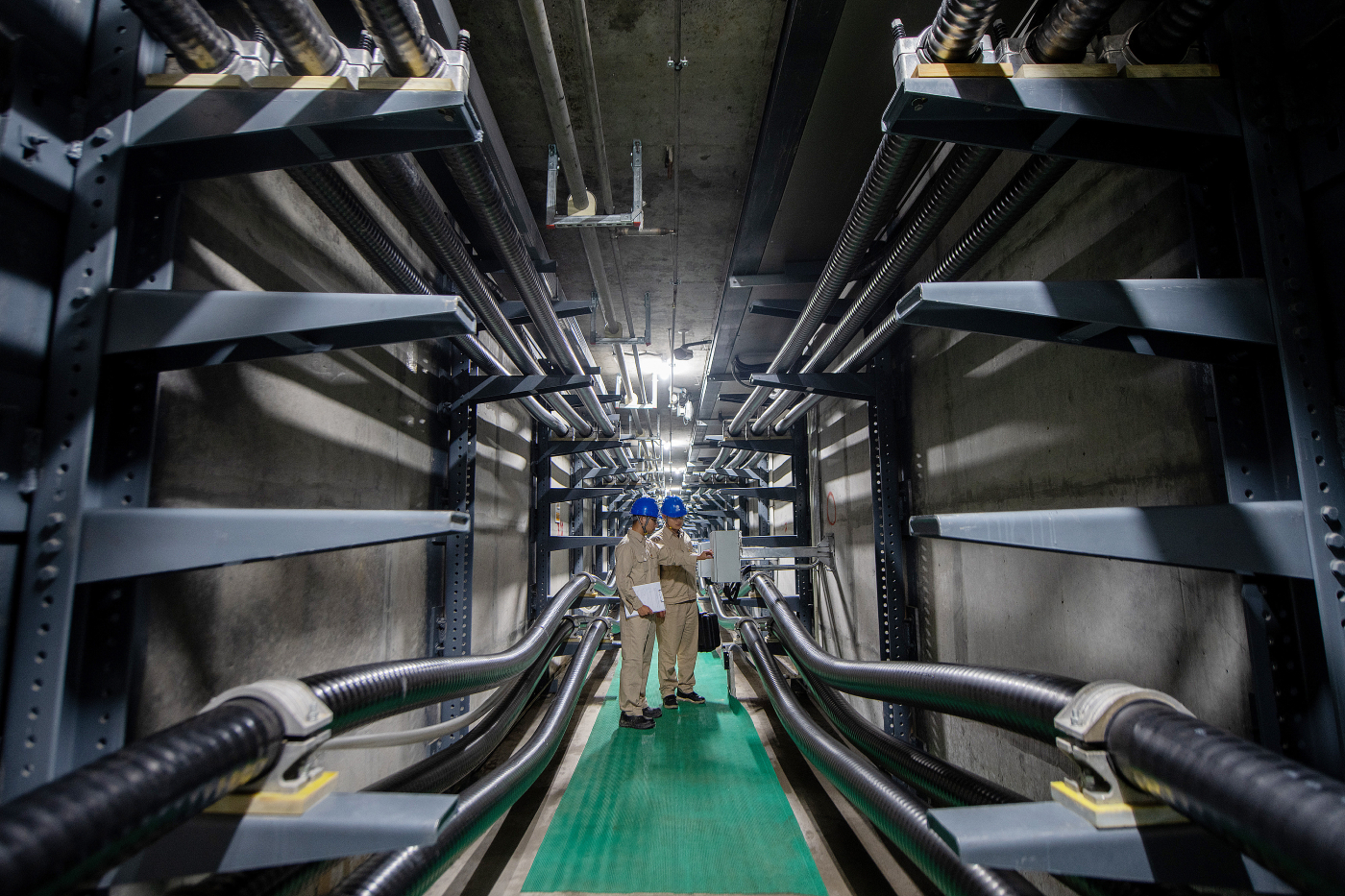In many cities in China, especially in some metropolitan areas or new urban areas, power towers, and wires are invisible. But thousands of households can use electricity normally. It mainly relies on underground cables to transmit electricity.
Underground cable is an important way to transmit electricity, through the establishment of underground channels and laying cables to achieve a continuous supply of electricity.
In recent years, the ability of scientists to control underground power cables has become stronger and stronger.
And new technologies are constantly being introduced and promoted, which has laid a solid foundation for the overall development of underground cables.
Underground Cables Are An Urban Development Trend
As China’s economic development and urbanization accelerate, the contradictions between electric power facilities.
And urban development is becoming more and more prominent. To ensure the safety of urban residents with electricity, and to maintain a clean and beautiful city.
It is necessary to reduce the overhead transmission lines over the city, set them underground, the development of underground electric cables.
According to statistics, some modern cities in the world, such as Berlin, Copenhagen, etc., have adopted an underground power transmission method of more than 70%.
At present, China is also accelerating the pace of construction of overhead power lines into the ground, underground cable projects, and underground integrated corridors.
As of now, in many other developed countries, cable undergrounding has been nearly 100%.
Underground Cables Have The Following Advantages
Enhance The Reliability Of The Urban Power Grid
Because the cable is exposed to the air, wind, and rain, it is easy to occur in cable aging.
The insulation layer off is also due to bare wire cable by the corrosion of acid and alkaline gases in the atmosphere and water vapor is the overhead electric cable has many dangerous hidden dangers.
Therefore, taking the outdoor power cable is necessary and extremely important.
But the underground electrical wire is a laying method with higher security.

Enhance The City’s Power Transmission Capacity
Usually, overhead lines can only be fixed to another tower.
But buried underground cable lines can reach many circuits, plus underground high-voltage cables generally have more efficient copper conductors, allowing them to transport electricity quickly.
Beautifying The Urban Environment
The huge spider web of dense urban overhead electric lines largely destroys the aesthetics of the city and destroys the visual effect of traditional and modern buildings.
By putting overhead lines into the ground, the city can be returned to a pure state. Which can create a sense of visual comfort and beauty.
Increase The Value Of Land Use
Land is a high-value but scarce resource, especially in the center of first-tier cities.
The spatial safety distance of the overhead line is higher than that of the underground pipeline.
Which decreases the value of land use, but by changing it to underground, the value of land use can be improved.
Reduce Safety Accidents
Taking the way of underground burial can better reduce the incidence of dangerous accidents and avoid accidents of personal safety due to utility poles.
Speaking of buried cables, there is nothing more famous than Japan’s above-ground cable poles.
“Can you count how many utility poles there are in Japan?”
This is not a question that can be understood by just counting.
Because according to statistics, there are about 35 million electric poles in Japan and continue to build new poles at a rate of 70,000 per year.
That’s why they call Japan the “Power Pole Nation”.
The undergrounding rate of cables in Tokyo, the largest city, is even less than 10%. So Japan deserves the title of “pole country”.
But why would Japan, a developed country, have a seemingly less developed way of dealing with cables?
Easy To Put Up, Hard To Bury
Why is it so difficult to achieve pole-free Japan?
Historically, during World War II, Tokyo was attacked by the U.S. air force, and much of the city was in ruins.
After the war, temporary measures were taken for rapid recovery.
And one utility pole after another was erected on the ground, which was much less costly than burying the wires underground.
The local government decided to give priority to erecting power poles for electricity transmission. And then burying the cables underground when there was spare capacity.

However, as Japan entered a period of rapid economic growth, the demand for electricity and communications increased rapidly.
And the number of utility poles originally erected as a temporary measure increased rapidly.
Nowadays, it is difficult to solve the problem of utility poles in Japan.
The first problem is the cost.
The cost of putting cables underground is three to ten times more than laying gas and water pipes. Costing 100 million to 500 million yen per kilometer.
Tokyo has more than 20,000 km of roads, and the percentage of those without poles is only 7%.
Assuming a calculation of 300 million yen per kilometer, it will also cost 5.58 trillion yen to finish paving Tokyo.
Currently, the cost of implementing cable undergrounding in Japan is shared 1/3 each by the central government, local governments, and companies.
And many oppose the government using a lot of taxpayer money to subsidize such projects.
However, there is also an optimistic view that if the progress of cable undergrounding is accelerated, engineering implementation and technology development will result in lower costs.
At the same time, the interests associated with utility poles are very complex, and all parties must be agreed before construction can begin.
The first step is to obtain the consent of the owner of each pole and cable. Which may be the electric company, telephone company, cable company, or other operators.
Next, the road manager’s consent must be obtained.
And the roads on which the poles are erected include national roads, county roads, and municipal roads. Each with a different manager.
Finally, the consent of neighboring stores, residents, and government authorities.
Such as the Ministry of Economy, Trade and Industry, the Ministry of Land, Infrastructure, Transport, and Tourism. And the Ministry of Internal Affairs and Communications has to be obtained.
Therefore, underground electrical wires in Japan are difficult.
This is what the ZMS cable team has to say about underground cables and an analysis of why there are still so many above-ground poles in Japan today.
Of course, many things have their reasons for existence, and these do not deny that Japan is a country with advanced electricity.
